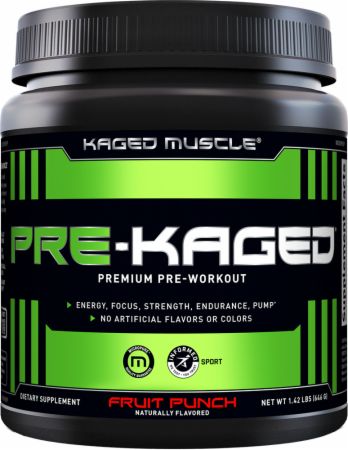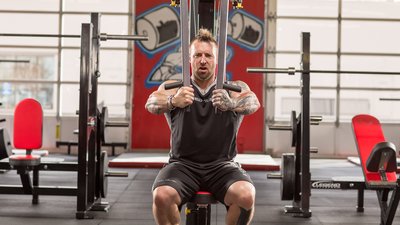When you first started doing an exercise, I'll bet you went through all the performance pointers like flash cards in your head to ensure you were doing the movement correctly. Hopefully, over time, the movement became second nature so you didn't have to think about it. That freed up your mind to instead focus on other important topics. Today, I want you to start thinking about tempo.
Experience has taught me that knowing how to manipulate rep tempo—the speed at which you raise and lower a weight—is one of the most effective yet underutilized muscle-building tools. That's especially true with chest training, and I'll show you exactly how I use rep tempo with this pair of chest exercises.
Manipulating rep tempo requires you to pay particular attention to the two main phases, the eccentric (lowering portion) and the concentric (lifting portion). Manipulating either (or both) of these phases allows you to effectively alter the training stimulus.
1. Bench Press
From the top position, I take a 2-second negative, lowering the bar under complete control to a point just above the nipples. Remember, a muscle is stronger on the eccentric contraction than the concentric, so controlling the descent in a deliberate manner allows you to increase the benefits of the negative rep.
As you approach the bottom of the rep, smoothly reverse direction without bouncing the bar off your chest. The smooth motion allows you to take advantage of the elastic energy that builds up when lowering the weight. If you come to a dead stop here, you lose that elastic energy.
On the positive rep, I use a strong, explosive motion to push the bar back to the top. The quick tempo encourages the greatest number of fast-twitch muscle fibers in my pecs to come alive. Note that I may be pushing as hard as possible, but with a loaded bar, it doesn't actually move very fast. Also, being "explosive" still requires control, so don't throw the weight up and allow yourself to get sloppy!

2. Pec-Deck Machine
Keeping a slight bend in the elbows minimizes triceps extension, which is ideal for better pec isolation. And since I'm using a machine, I don't have to focus on the movement plane, so I can focus on contracting my chest.
From the top position, I use a slow eccentric for 2-3 seconds. Essentially, you're allowing the weight to slowly pull your hands apart. The deliberate control here is critical in order to take advantage of the eccentric contraction. The slow speed also better enables you to stop the motion so you don't end up overstretching your shoulders.
When smoothly reversing the motion at the bottom, you can again take advantage of the elastic energy. On the concentric, go back to a more powerful, explosive motion while still keeping control over the movement.
A Note About Time Under Tension
Counting the total number of repetitions isn't the only way to measure success. The length of your set can also be important.
The concept of "time under tension" (TUT) is one that hasn't been definitively studied, but anecdotal evidence suggests that a strength-based set should last 4-20 seconds, while one for muscle size should last 40-60 seconds. When training for size, pushing a weight as fast as possible and lowering it quickly without control may not optimize TUT.
You should still select a weight at which you fail between 8-12 reps, which is optimal for hypertrophy, However, the rep tempo means the set should last about 40-60 seconds.
When done correctly, TUT leads to the production of metabolites like hydrogen ions, ammonia, and inorganic phosphate. This increase in metabolic stress signals the body to increase the production of hormones necessary for muscle protein synthesis—the key process in muscle growth.




